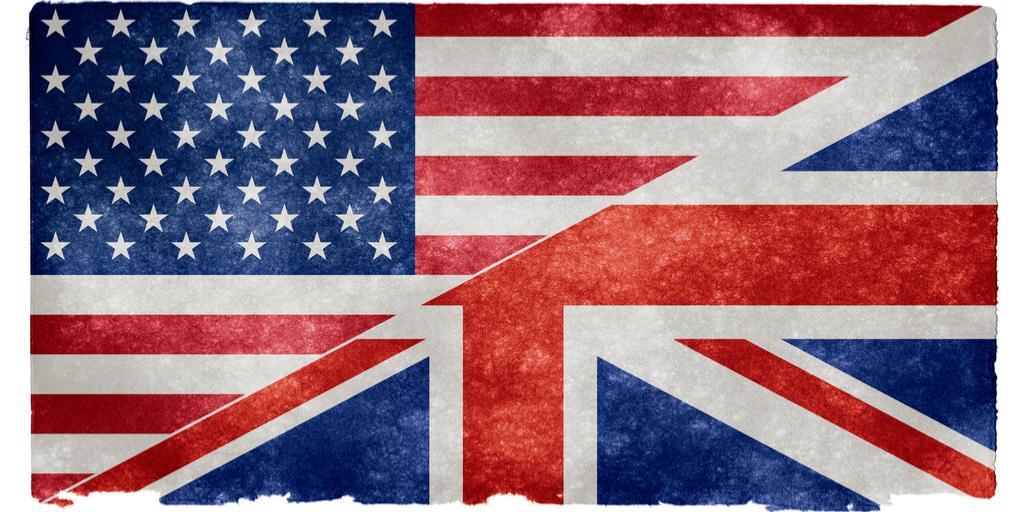No single authoritative text defines British law, but the Bard can help us to understand it.
1776: The Loyalists’ Perspective
Although Samuel Seabury might not be a household name, fans of the musical Hamilton should be able to identify him. In the first act, a foppish clergyman enters to strains of harpsichord music to announce, “My name is Samuel Seabury, and I present free thoughts on the proceedings of the Continental Congress.” Our hero Alexander Hamilton then appears, and delivers a rap over poor Seabury’s objections, symbolizing the triumph of revolutionary ideas over archaic ones.
The real Samuel Seabury (1729-1796) was an articulate New York Loyalist who wrote pamphlets such as Free Thoughts, on the Proceedings of the Continental Congress. To avoid attacks, Seabury signed them “A Westchester Farmer.” One of Hamilton’s earliest public pieces was an attack on Seabury called The Farmer Refuted.
Students of American history (whether or not they have been to the musical theater) who want to learn more about Seabury and his Loyalist brethren have a fine new resource. It is Gregg Frazer’s God against the Revolution: The Loyalist Clergy’s Case against the American Revolution. In fact there has been a resurgence of writing about the Loyalists in recent years. Studies by Maya Jasanoff and Ruma Chopra have done much to situate Loyalists in the revolutionary moment. Frazer adds to this literature with a very specific goal: He wants to present, in a clear and logical way, the arguments made by Loyalist clergy. This affects the book’s organization. Chapters develop not chronologically but according to Frazer’s organization of the Loyalists’ arguments. He aims to let these speak for themselves as much as possible.
The author insists that the Loyalists were not simplistic; that their ideology was robust, not shallow; and that they were not primarily motivated by fear. Instead, the Loyalist clergy are depicted as loving America so much that they wanted to warn the colonies in a clear and coherent way of the dangers of rebelling against Great Britain.
As a result, this book is a definite contribution to intellectual history (tracing ideas), to American religious history (these were active clergy making these arguments), and to political theory (as the arguments impact political thought). Readers interested in any of those topics or in the American Revolution generally will profit from it. Indeed, several of its passages whetted my appetite to read more deeply in the subject.
Loyalist Arguments
In researching the Loyalist clergy, Frazer identified 182 across the colonies. (He doesn’t list each and every name, but it would have been helpful if he had done so in an appendix.) From that larger group, Frazer brings to our attention 12 who mounted some argument or other against the Revolution. Most of the book, though, centers on five out of the dozen. These five key preachers are Samuel Seabury (whom we have already met), Jonathan Boucher (an Anglican in Virginia and Maryland who would sever his friendship with George Washington over the Revolution), Thomas Bradbury Chandler (a New York Anglican who was driven out of America during the War for Independence), Charles Inglis (a New York Anglican who led the prestigious Trinity Church in Manhattan), and John Joachim Zubly (a Georgia Presbyterian pastor who served in the Continental Congress before refusing to break from England).
With the book built around Loyalist arguments, we might ask what these were.
Frazer begins, naturally enough, with the theological ones. He points to the contests over the meaning of such passages as Romans 13 and I Peter 2, in which the apostles urge obedience to established government, including honoring and praying for the king. Frazer holds up the Loyalist clergy as consistent in their literal interpretation of these passages. He believes their commitment to the plain meaning of these inspired texts was the centerpiece of their stance of allegiance to the mother country. (There is some irony in the fact that, in this case, the Anglicans emphasized a literal interpretation, while in other settings they would want to balance the literal text with reason and church tradition.)
It should be noted that the author’s sympathies are clearly with these Loyalists’ endorsement of total obedience and that he is skeptical of all forms of resistance to government.
The second group of arguments centers around these men’s political thought, and this section allows Frazer to draw on his background in political theory. In their writings, the Loyalists developed a vision of government that was opposed to both Tom Paine and John Locke. The Loyalists started with a mixed view of human nature: People are sinful and limited yet made for society. For humans, government is a necessity. Rather than the result of social contract, government is divinely ordained and so continuous in human experience. These clergy went so far as to root divinely ordained government in original patriarchy. On this point, although Frazer doesn’t reference him, I wondered if Robert Filmer was still influencing these Loyalists.
The third set of arguments is legal and constitutional. Like the Patriots, the Loyalists studied very closely the colonial charters and worked to parse the unwritten British Constitution. Charters acknowledged royal sovereignty—did that include parliament? As the colonies had tolerated parliamentary legislation previously, the Loyalists asserted that it was an established fact, with legislation and taxation inseparable. They thus insisted on the 18th century metropole’s definition of sovereignty as the king-in-parliament—the exact formulation denied by the Patriots. Further, they asserted the virtual representation of the colonists in the British Parliament, yet another idea that the Patriots rejected.
The final group of arguments is practical and prudential. The Loyalists were most pointed in the mid-1770s, before independence was declared, at which time their public voices were silenced. They acknowledged abuses by the British ministry but did not believe that such abuses justified the American policy, which seemed calculated to exacerbate divisions. They strongly questioned the legitimacy of the Continental Congresses, believing that only individual colonial legislatures had constitutional standing. They grew ever more horrified by the measures enforced by the Continental Congress as it moved closer and closer to independence.
Meanwhile, they found themselves persecuted by local committees who, with no checks or legal standing, silenced their preaching, stopped them from publishing their ideas, seized their property, and forced them to flee for their lives. Hoping to the end for reconciliation with the mother country, these Loyalists warned of all the dangers that came with launching on a plan for independence.
Counterarguments
In presenting the Loyalist perspective, the book makes clear their beliefs and arguments. It also, however, reproduces their biases and blind spots. These Loyalists were theorists, but also actors in the conflict, and so the polemical nature of some of their arguments should not be dismissed. As I read, I kept imagining Patriots like John Adams, John Jay, and John Witherspoon demanding to answer the arguments, and it should be remembered that these debates did have two well-argued sides.
So, for instance, the debate over Scripture remains a fascinating one to examine. Frazer says the Patriots’ use of Scripture was misleading and avoided the clear meaning of the text. Other recent scholarship by James Byrd has demonstrated extensive Patriot engagement with the problems of interpreting Romans 13 and I Peter 2, and they intentionally worked to do so in a consistent, faithful way. Moreover, Daniel Dreisbach has demonstrated that Patriot pastors were often very careful in their use of scriptural passages about “liberty.” Their moves from spiritual to political liberty were self-aware and explicitly considered.
Closely related to the use of the Scriptures was the debate over “passive obedience” (the Loyalist formulation) or “unlimited submission” (the Patriot formulation). Frazer supports the Loyalist disinclination to resist, although he acknowledges that some Loyalists did recognize justifiable resistance at some point (just not in the American conflict). If so, resistance became a question of degree and prudence rather than being simply out of bounds. Moreover, many Patriots wrote extensively about where and when the right to resist became the right to cut ties with England—they were cognizant of the need to get this exact point right.
In discussing resistance, Loyalists had to reckon with a key event in British history: the Glorious Revolution of 1688. It was an example of resistance to a British monarch that led to his removal, and it was within recent memory. The Glorious Revolution had been justified as Protestant resistance to a tyrannical Catholic king. That model of a successful transfer of power very much appealed to the Patriots in their own resistance to a king“whose character” (in the words of the Declaration of Independence) “is thus marked by every act which may define a Tyrant.”
The debate over the Glorious Revolution therefore also points to the origins of the American Revolution in general. Contra many of the Loyalists (and Frazer himself), Americans were not only motivated by the political thought of John Locke. Rather, they drew on a larger Anglo-American tradition of political thought. Their own reading of British constitutionalism allowed for the protection of rights, liberties, and property. Furthermore, versions of republicanism were not new imports but part of a longer-term colonial outlook, as both Bernard Bailyn and Michael P. Winship have demonstrated.
Loyalists and Liberty
Even so, God against the Revolution contributes much to our understanding of the break with England. It restores the Loyalists as thoughtful participants in the debate over the American future. By making their case strongly, Frazer forces readers to feel the weight of Loyalist appeals to Americans whose sympathies still lay strongly with Britain. His account also serves powerfully to remind us of the competition and violence involved in the Revolution (a point also made in a recent edited volume). The Loyalists suffered for their stances, and their Patriot opponents were not always high-minded or magnanimous. These costs have to be reckoned into the revolutionary experience.
Finally, this book demonstrates that the Loyalists, not just the Patriots, were advancing a conception of liberty. They emphasized how liberty was accomplished through legal and constitutional protections under a mixed regime of monarch and parliament, within a society oriented hierarchically. Although this differed from the liberty of the Patriots, it still partook of a longer-term emphasis on liberty in the Anglo-American world.
Readers of God against the Revolution will thus meet Loyalists they should take seriously. It will impel them to consider anew the great contests involved in the American Revolution.


